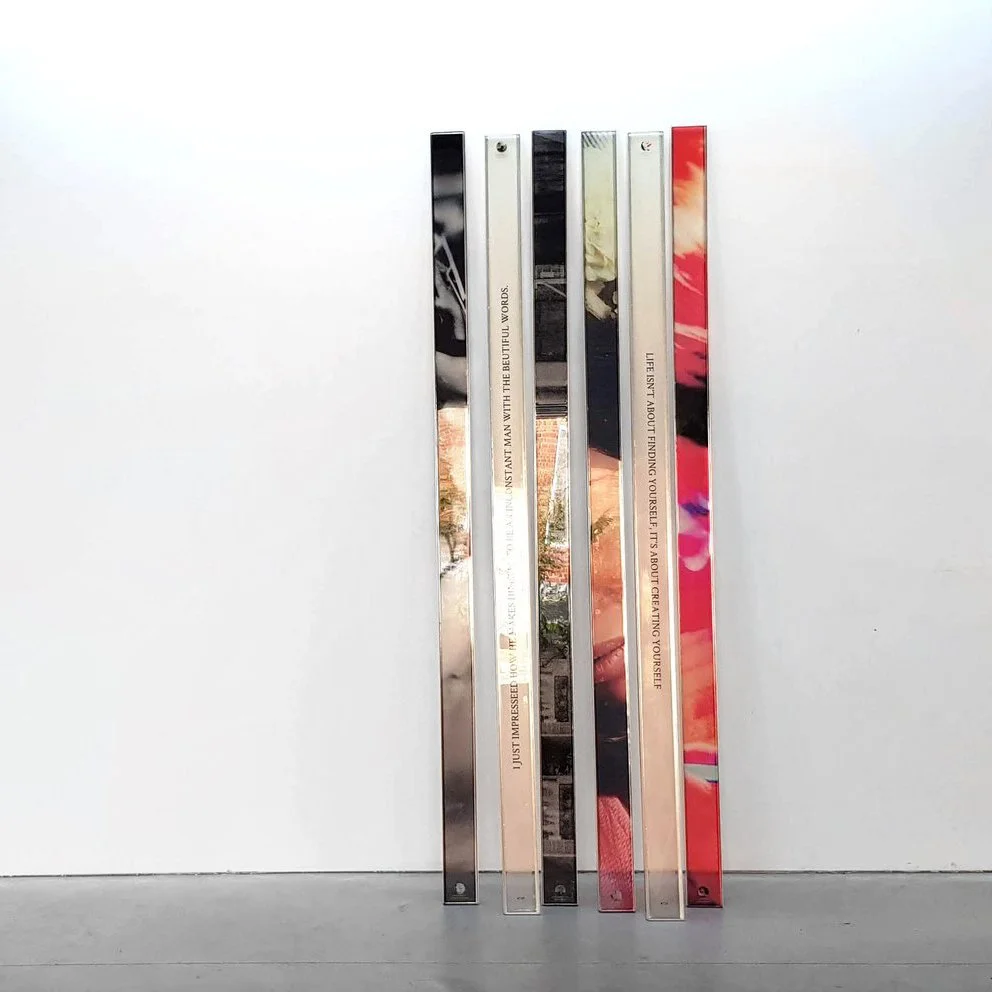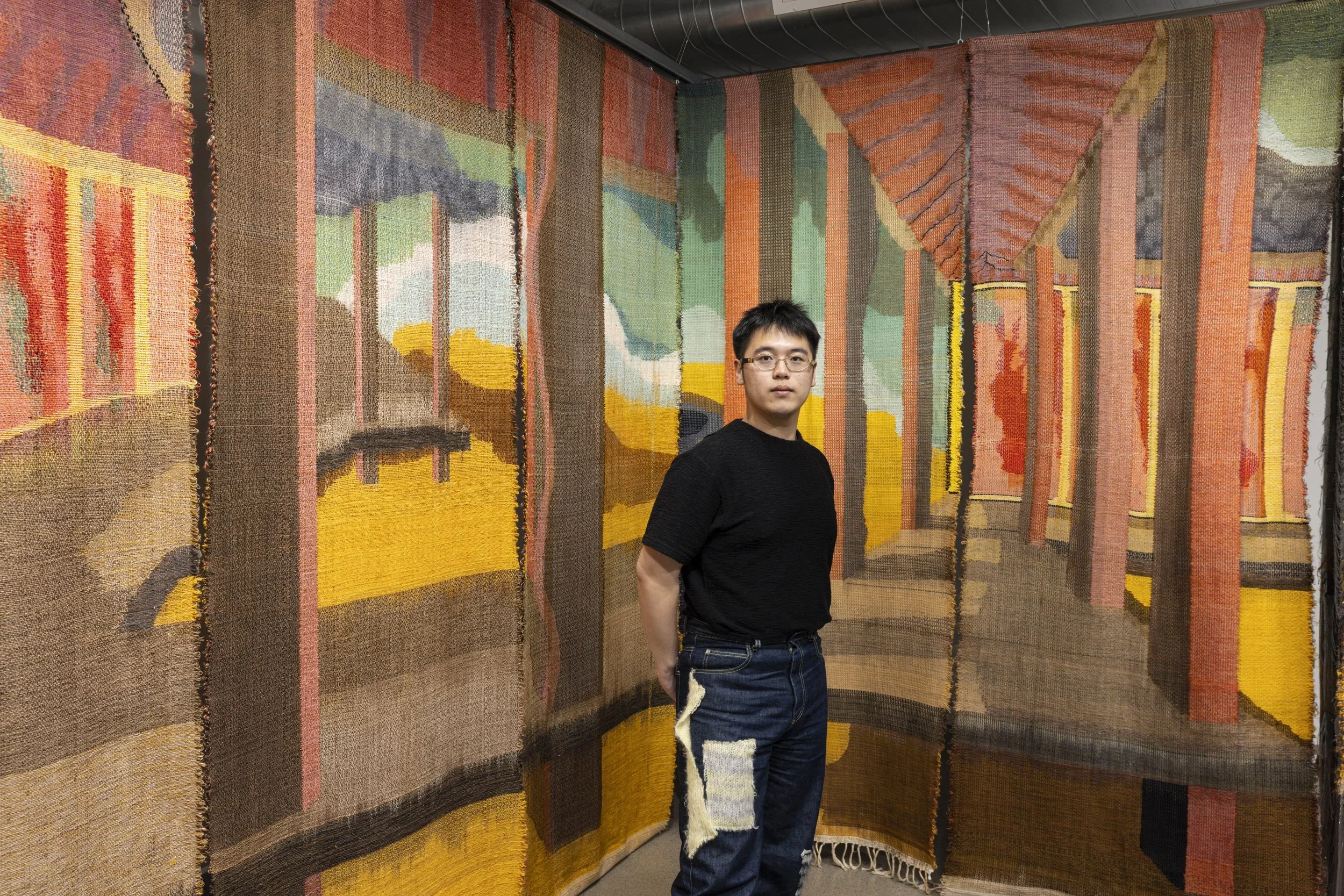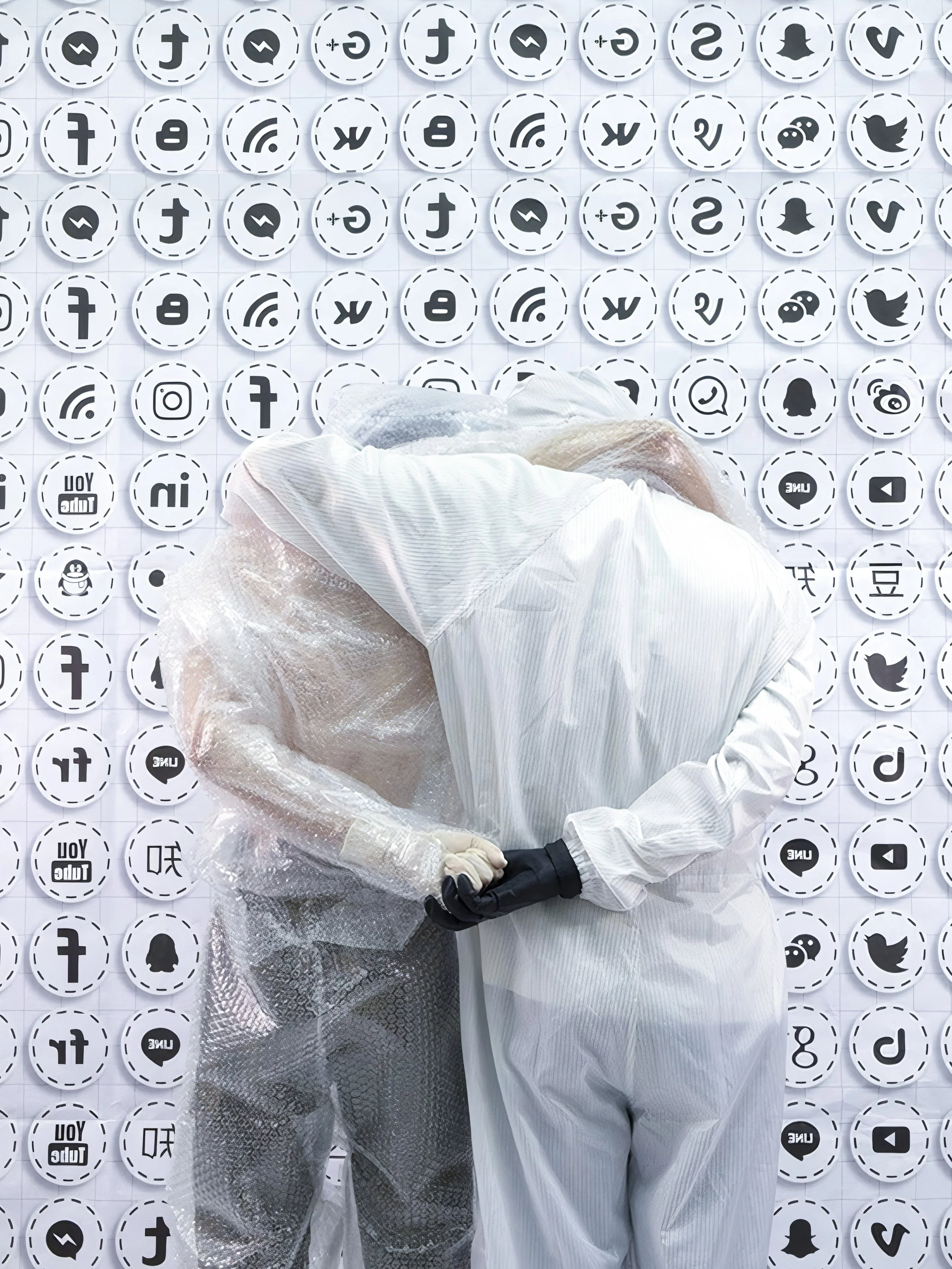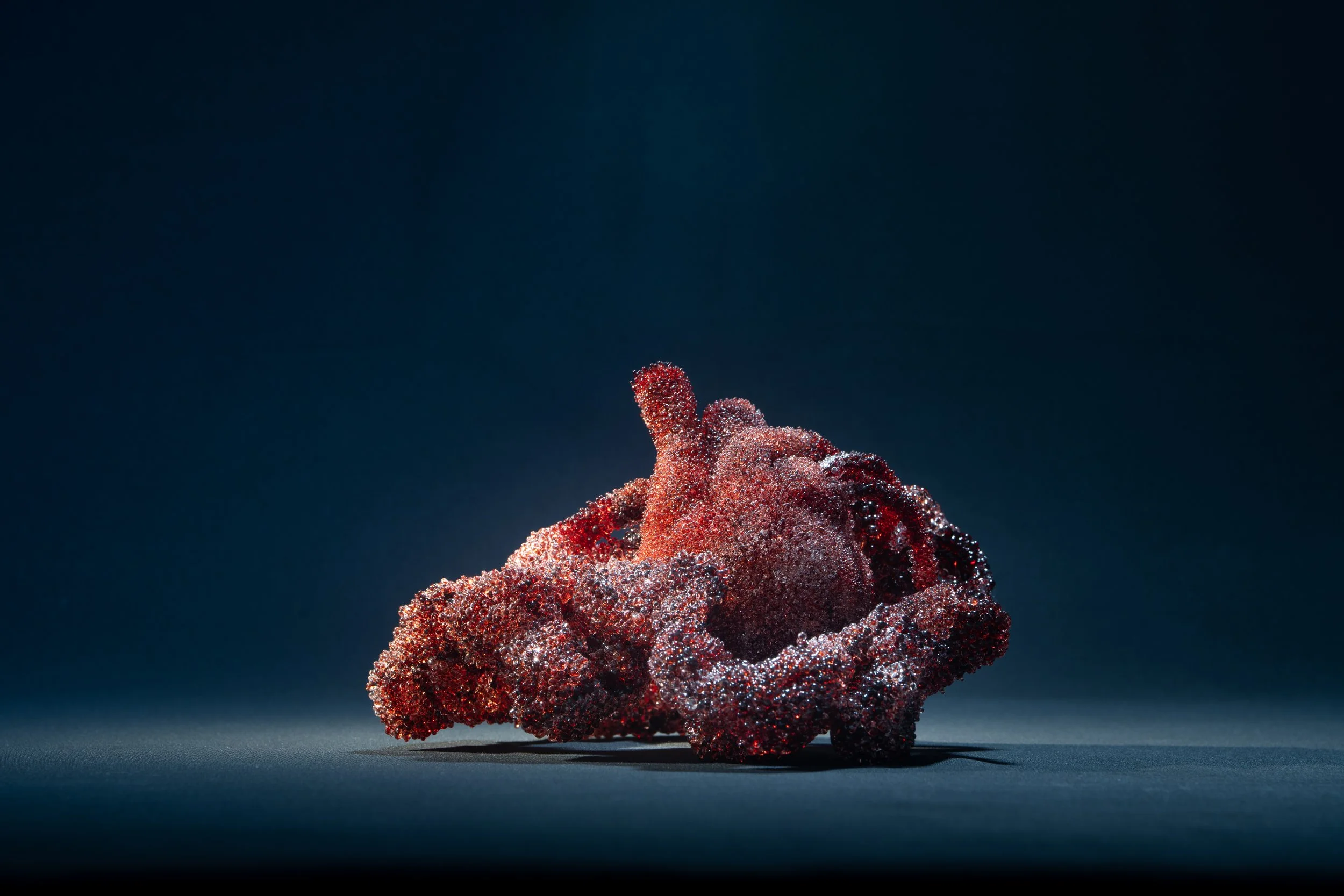10 Questions with Leroy Brothers
Belgian brothers Nicolas, Gilles, and Gregory are the creative minds behind the art collective Leroy Brothers. Nicolas studied Fine Art at Villa Arson (Nice, France) and The Cass (London Metropolitan University), while Gregory and Gilles are autodidacts. The artistic trio has been working since 1997. It was at that time that the Internet in Europe came up. Ten years later, in 2007, after several internet-inspired art projects ranging from MySpace user portraits to QR sculptures, they started to develop their own web platform, which came to be known as “Witness your World”.
Selected to show work in the “Jing’an Sculpture Park” during the Expo 2010 Shanghai China, the Leroy Brothers found a world stage. Later, the Moscow MMOMA held a major exhibition of their work, also exhibited during the New Digital Art Biennale “The Wrong” in 2015.
They currently live and work between Belgium and France.
Leroy Brothers portrait
Witness Your World | DESCRIPTION
Today, anyone can take a photo of a scene, which can be perceived as artistic, and share it with others. This, in turn, could be claimed as art. It reinforces the idea that every one of us has at least one, two, or three great photographs in them. The concept of art has lost its complexity, thus becoming more technologically driven and adherent to the new cultural and artistic frameworks and concepts. As a result, it is crucial to identify the pattern and direction of the contemporary art movement in order to define its future implications.
The Internet at large, and social networking sites, in particular, have blurred the distinction between front and backstage, something that some social theorists would argue is a feature of postmodernity. In a postmodern society, public and private merge and cannot be clearly separated. Sociological changes like these caused by social media can have inherent advantages in several areas of life.
Leroy Brothers’ platform “Witness Your World” is an internet-based workflow that creates user-generated artworks and NFTs, mashed up by automated algorithms and AI.
Pictures and messages are submitted by the users and integrated into the creation of the works. Thus, the content of the images and messages function as an instant mirror of society. Contributors share their world with the online community, and each submission eventually becomes part of one of the artworks. The result is a variety of world views from different people: information ranging from the everyday-life scene in Shanghai or the fascinating street culture in London to conflicts such as the Maidan Revolution in Ukraine or the migrant crisis.
Decomposition #522, Print on canvas, 220x140 cm, 2019 © Leroy Brothers
INTERVIEW
Leroy Brothers, as mentioned, you are an artist collective and three brothers. Could you talk about your roles and background?
Indeed we are three brothers working as an art collective for over 20 years. Our work is signed by Leroy Brothers, so it is impossible to see who did what on the artworks.
Although a lot is created in our studio, we regularly collaborate with external people to produce our works. For multimedia installations especially, we can need up to 50 people for the realization of it.
Each of us is indeed more or less specialized in a certain field, from organizational skills to productivity over IT to commercialization or financials… we’re very complimentary. When we initiate a project, first the concept needs to be outlined. From there on, we dispatch tasks and start organizing who does what, which external party will have to join in, how budgets are allocated, and so on. We primarily finance our projects independently to remain free.
How did you begin your project Witness Your World?
The first seeds of Witness Your World can be traced back to 2006, when we developed our initial online sharing platform. To situate this on the internet timeline, that's two years after the very first version of Facebook and four years before the launch of Instagram.
The next versions have been experiments in exploring the possibilities of crowdsourced creativity and user-generated art to create artworks. Today Witness Your World generates artworks, which are either presented in real life or digitally through NFTs. The authenticity of the NFT on the blockchain is what makes it unique. The representation of it becomes secondary. It's a physical state of the NFT. The artworks representing the NFTs are proposed - as we coined it - a 'prêt-à-crocher' collection. Profits of this collection go back to the contributing users, charities, and eventually museums and galleries.
Witness My Face, Interactive projection on containers, 30x7 m, 2016 © Leroy Brothers
What do you see as the strengths of your project, visually and conceptually?
We see Witness Your World in the first place as a conceptual artwork. It is an enormous operation that is ever-evolving, considering the rapidly changing technology used. We need to remain innovative and fresh to attract new users, but it is probably most different from other artistic projects because it actually has to function! There has been a lot of artistic research in the field of the Net. There is, however, a very blurry space between the virtual and the real regarding artworks. Many projects remain on the web and aren't able to escape their proper context. So what we often find is that they are only seen by a very selective, almost secretive audience. They remain in their micro echo chamber if you want, created for those in the know. Even with the NFT craze, it still remains rather incomprehensible and invisible for most of us. Witness Your World is opening up to another kind of audience, as the gross of the users is not related to the art world at all. The final artworks that we propose are a collection of images and words representing our current world. In that sense, it offers a gate between those two worlds. We basically recycle online content and make something different and eventually useful from the received data in real life.
You have been quoted, "With all the madness in the world around us, we decided to give the third version of the platform a much more social feel. Users contribute by posting data to create a general sense of the world as it is now." Can you explain the role of an artist in society? How do you accomplish your role as a collective?
Firstly, the field of art is one where failure shouldn't necessarily be bad. This is why artists should always try to explore the unknown, regardless of the outcome.
Secondly, we live in a very tumultuous time where information is abundant. It is very hard to take in all this data and make sense out of it. In the end, we are steered by our convictions, and opinions become very biased. The world becomes a world of extreme contradictions. If you are not with me, then you are against me. Liberals are - no matter what - against conservative ideas, and conservatives are against liberals, whatever good their proposition is. The rich become extremely rich, and the poor are extremely poor. Also, weather conditions are becoming extreme, creating drought, storms, floods, forest fires, and epidemics. For us, an artist today needs to take this into account. Instead of making art for art (or art for money as it is too often the case), an artist should try to contribute to society by opening minds, proposing alternative solutions, approaching subjects in different ways, researching fields that are not explored yet.
Fragmentation #834 & 709, Epoxy and prints, 220x10x3 cm, 2019 © Leroy Brothers
What do you hope that the public takes away from your work?
There exists a false general thought that art is intrinsically linked with monetary value. Luckily, many are fed up with this shift focusing on the monetary value more than on the culture.
We all tend to say aloud that a work of art should be bought with feelings, but we are really thinking silently, "Will it rise in price?". The economics around it has perverted the whole art system. We aim to get rid of this heritage by communicating openly with the public regarding the commercialization of artworks. Therefore we also have our own E-gallery offering a vast range of multiple works. We encourage other artists to do the same. The big difference is that by working like this, we can give back a big chunk of the revenues that "normally" goes to the galleries, to where it is needed. Witness Your World is, therefore, an artistic project capturing today's world, but the platform also becomes a social project contributing financially to improving the world. This is what matters most.
Talking about economics around art creation, we can say we are fierce supporters of financial education in art schools, as making profits is vital for an artist. Without it, you limit the liberty to think big and the chance to make a change. Unfortunately, how to make profits and especially what to do with those profits is not something young artists are taught.
The combination of the images and installations creates an interface between your artistic philosophy and society. Where do you find inspiration? And how do you engage with your network?
There exists from our side a fascination for advanced technologies. Machine learning, big data, artificial intelligence, robotics, nanotechnology, and so on, how is it changing the world? Or our very being? What is being a human, and at what point will we be more machine than human? Will it affect our very reason for being on this planet, or will it fluently be integrated as part of the evolutionary theory? These are the kind of questions that are the drive for our creation.
The crowd on Witness Your World is triggered either offline or online. The offline part is the artistic events we organize where an audience gets to know our work. We can trigger the attention of a few percent, which will try out the platform and become active participants. On the other hand, we count on the virality of the Net to attract new users. There are complex protocols to be followed, using, for instance, growth-hacking techniques.
#856 © Leroy Brothers
#910 © Leroy Brothers
How do you keep yourself up to date with the latest digital trends and technologies that have today a significant impact on your artistic production?
The interesting part of Witness Your World is that it is ever-evolving, so we can never know what the next step will bring. We have a small team of very tech-savvy people, incredibly eager to learn, working at the forefront of this evolution. It is a constant search for the next thing, the latest inventions that we evaluate together and decide whether or not they are useful to the platform. For example, although we have used blockchain-certified authentications for a long time, the use of NFTs is the latest change implemented into the project.
What was the most challenging part of your project, Witness Your World?
To run and operate a viable platform is a very challenging job. There are so many aspects that need to be taken into account and are completely out of the field of art creation. There's development, marketing, trends, user behavior, financials, competition, progress. In the tech world, if you can't adapt fast enough, you are surpassed. It's a never-ending sprint.
Epoxy painting #786, Acrylic print and epoxy, 90x120 cm, 2019 © Leroy Brothers
Do you have any upcoming shows or collaborations you are looking forward to?
We currently have a solo show in the IFA gallery in Brussels (until the 7th of November), where we present NFTs and physical representations of those NFTs. It's yet another attempt to invite the digital into the physical space.
In the near future, the main collaboration to look forward to is with charities, to which parts of our online revenues will go. We hope that with this new way of working, we will be able to make some real changes for someone or something.
Finally, Share something you would like the world to know about you?
It is getting clear that the art world is not always the most transparent, and, especially in the high-end of the market where money rules, things can get dodgy on a certain level. With our online gallery, we present an alternative way of art economics. As a start, we pledge that 10% of the sales revenues will go to projects that aim to make a better world. For those willing to contribute, we suggest keeping track of the beta version of Witness Your World, which will be running properly soon.
























